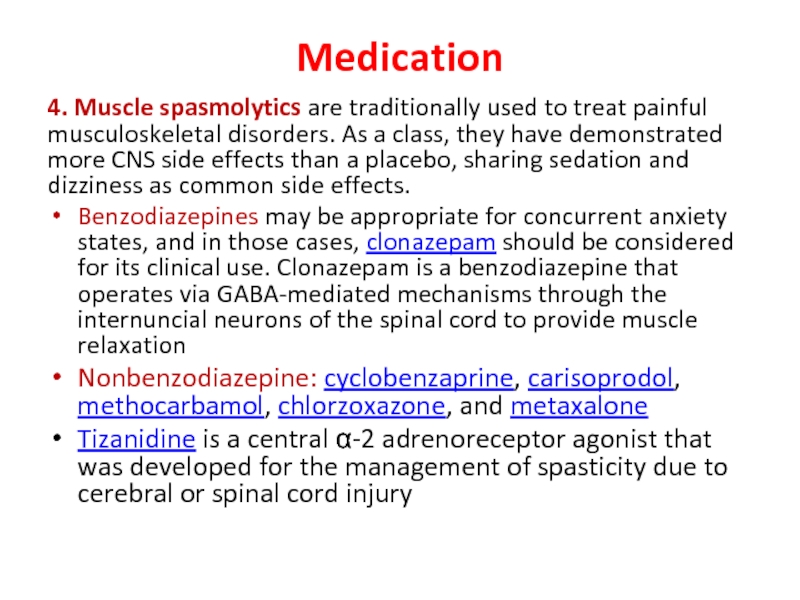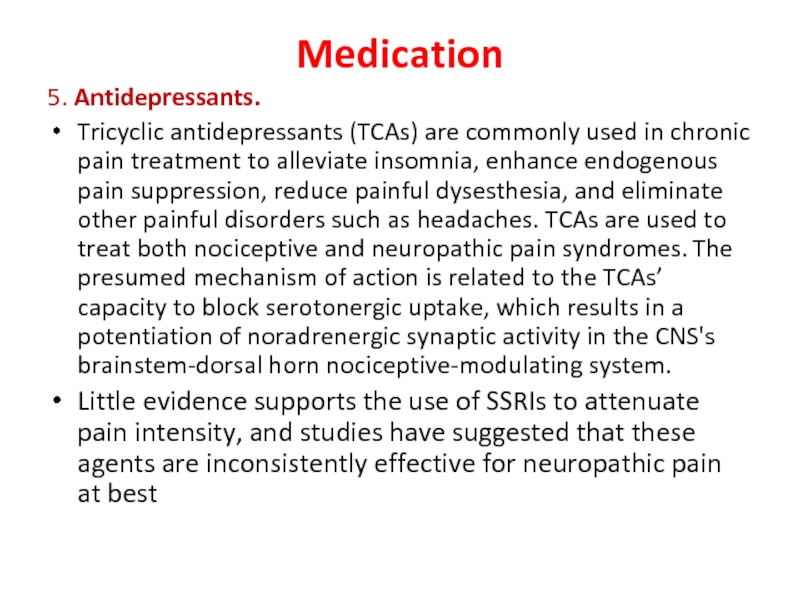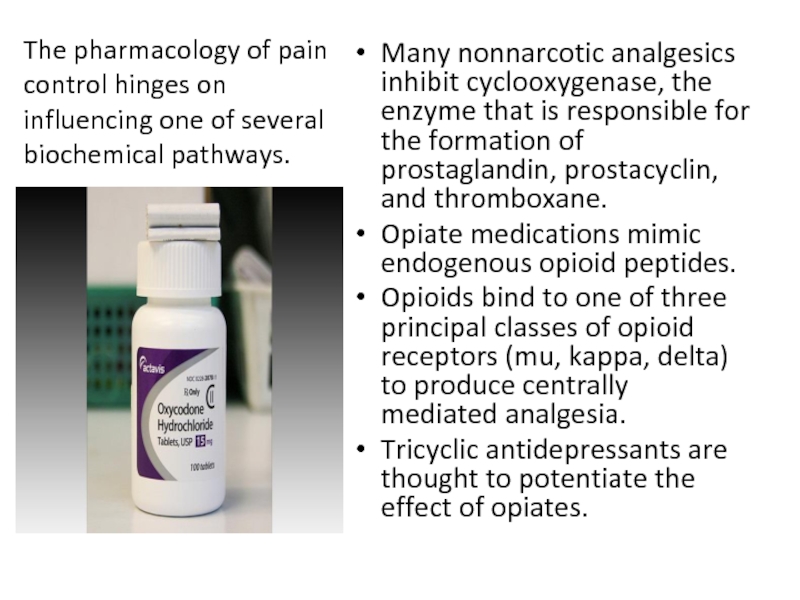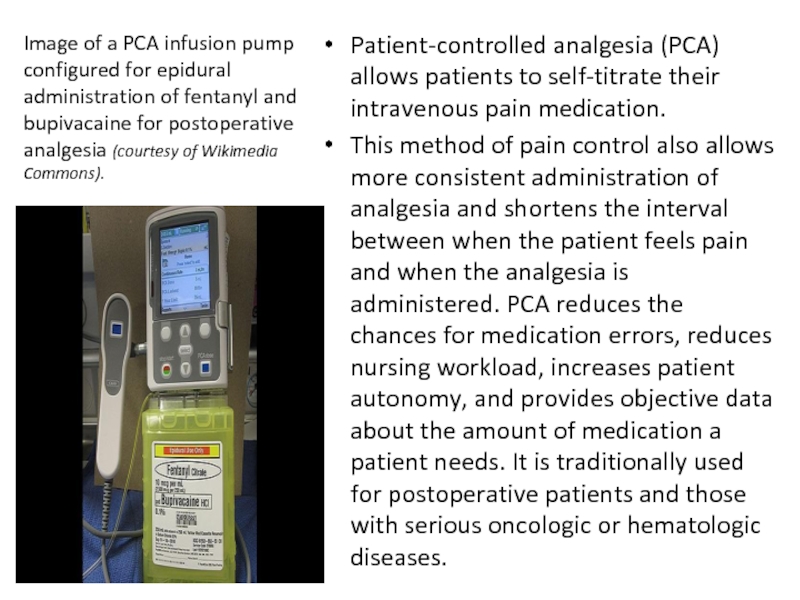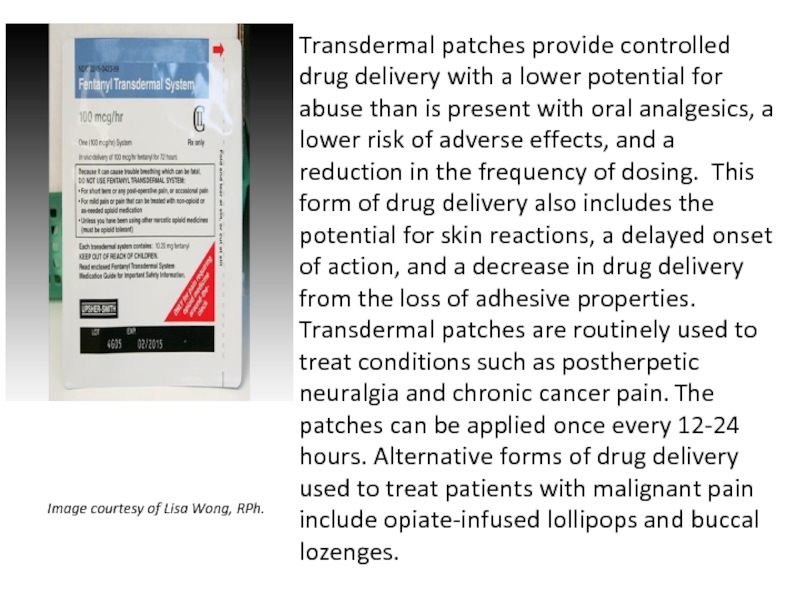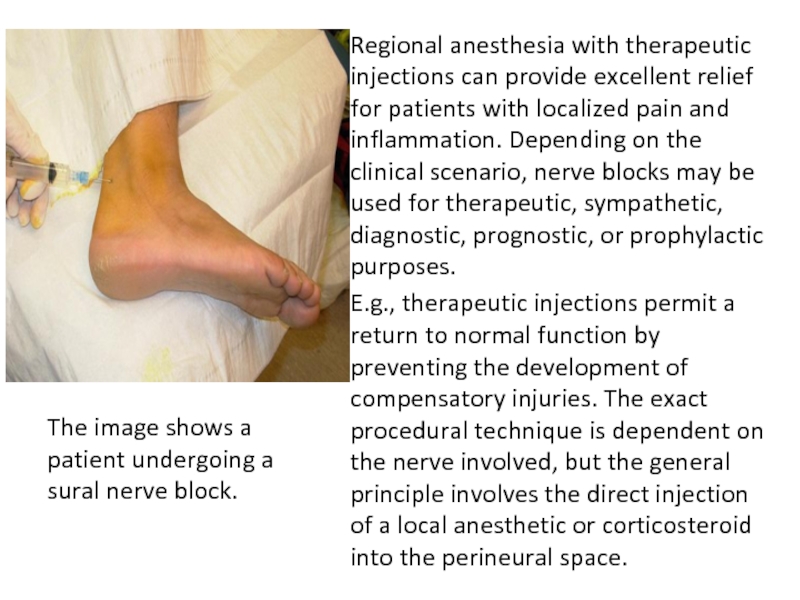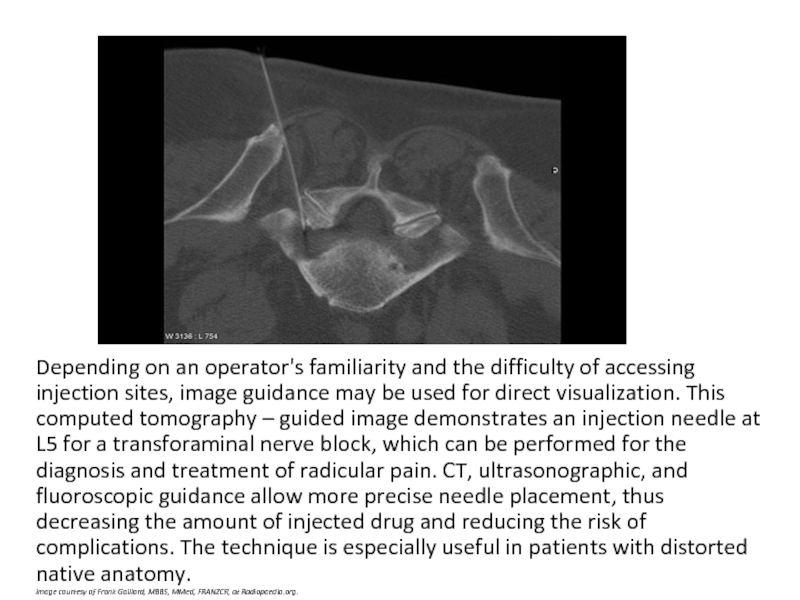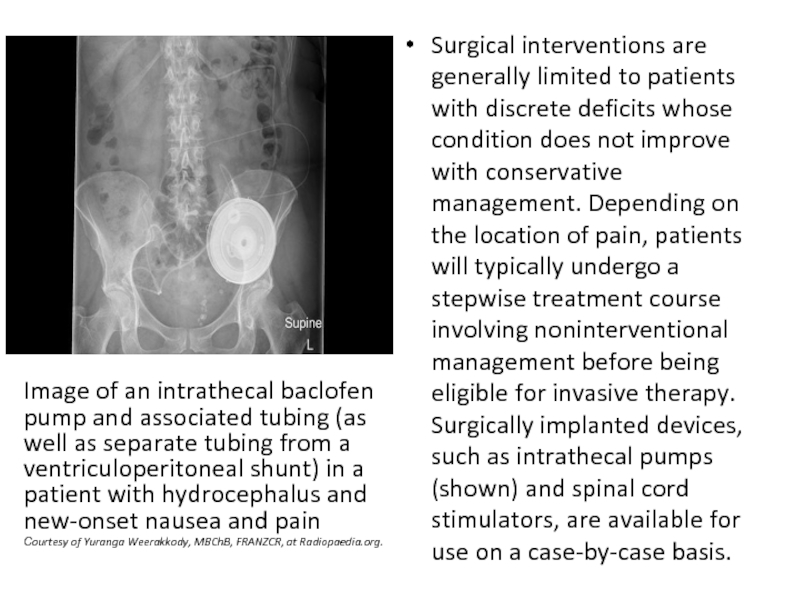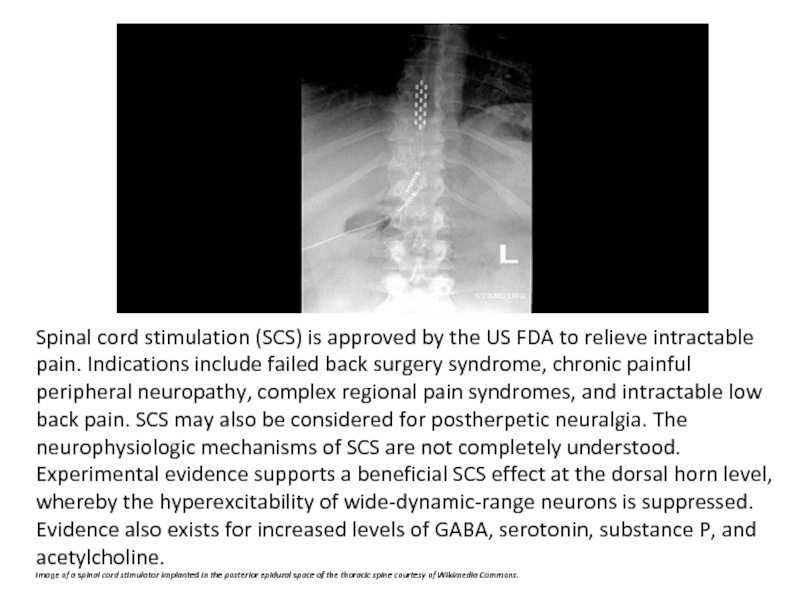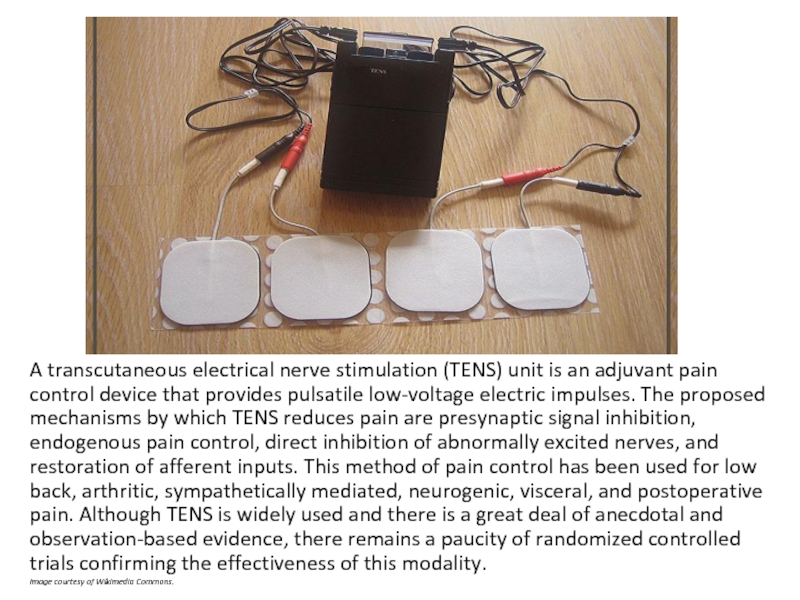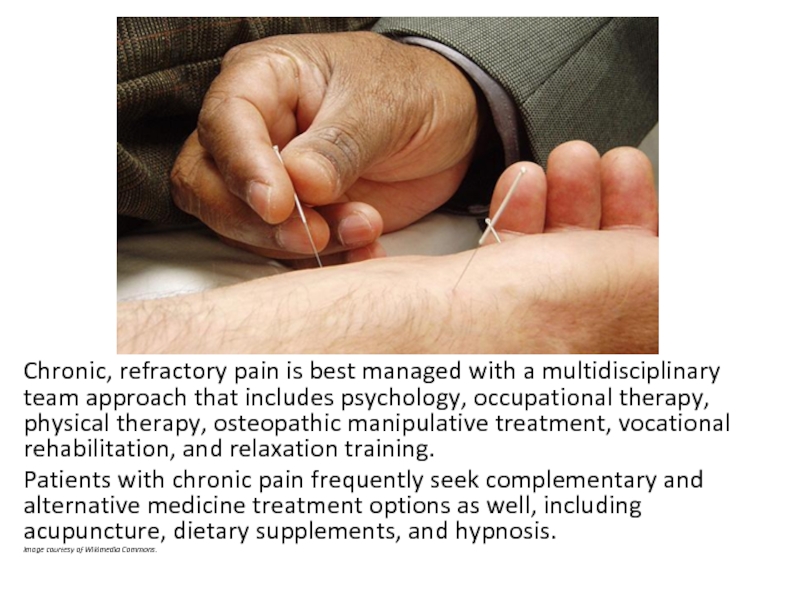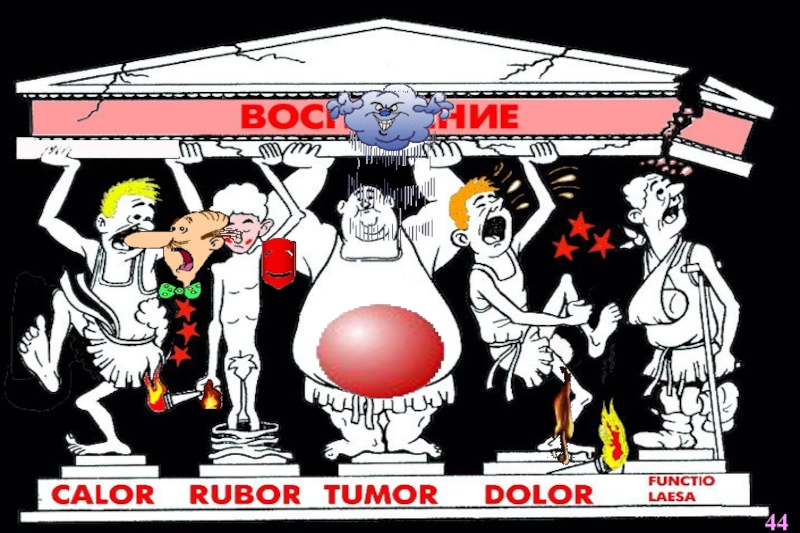- Главная
- Разное
- Дизайн
- Бизнес и предпринимательство
- Аналитика
- Образование
- Развлечения
- Красота и здоровье
- Финансы
- Государство
- Путешествия
- Спорт
- Недвижимость
- Армия
- Графика
- Культурология
- Еда и кулинария
- Лингвистика
- Английский язык
- Астрономия
- Алгебра
- Биология
- География
- Детские презентации
- Информатика
- История
- Литература
- Маркетинг
- Математика
- Медицина
- Менеджмент
- Музыка
- МХК
- Немецкий язык
- ОБЖ
- Обществознание
- Окружающий мир
- Педагогика
- Русский язык
- Технология
- Физика
- Философия
- Химия
- Шаблоны, картинки для презентаций
- Экология
- Экономика
- Юриспруденция
The medical help in the case of pain syndrome презентация
Содержание
- 1. The medical help in the case of pain syndrome
- 3. Pain is a universally understood sign of
- 4. The somatosensory system involves the conscious perception
- 5. Second-order neuron cell bodies are located in
- 6. Image courtesy of Legon et al.[6]
- 7. Pain Etiology The categories of pain nociceptive
- 8. Nociceptive pain Nociception is a normal
- 9. The colonoscopy image demonstrates severe colitis that
- 10. Neuropathic pain Neuropathic pain is pain induced
- 11. Herpes zoster (shown) can cause neuropathic pain via growth and inflammation within dermatomal nerves.
- 12. Pain Etiology Sympathetically mediated pain is accompanied
- 13. Pain Etiology Radicular pain is evoked by
- 14. Pain Etiology Psychogenic pain is inconsistent with
- 15. Sensitization Sensitization is an adaptive process in
- 16. For example, patients with sunburns often
- 17. The image illustrates the pain pathways involved
- 18. Pain modulation Pain modulation can both enhance
- 19. Pain assessment Pain assessment should be ongoing,
- 20. Pain must be assessed using a multidimensional
- 21. Pain assessment. Chronicity of Pain Initial assessment
- 22. Pain assessment. Chronicity of Pain Chronic pain
- 23. Pain assessment. Severity of Pain Pain is
- 24. Pain assessment. Quality of Pain The quality
- 25. Pain assessment. Contributing/Associated Factors Nociceptive symptoms often
- 26. Pain assessment. Anatomical Etiology of Pain It
- 27. Pain assessment. Mechanism of Injury If applicable,
- 28. Pain assessment. Barriers to Pain Assessment Barriers
- 29. Pain assessment. Barriers to Pain Assessment The
- 30. Pain assessment Determining the best treatment course
- 31. Single-dimensional scales: These scales assess a single
- 32. Multidimensional scales Multidimensional scales (eg, McGill
- 33. Although laboratory tests, imaging studies, and nerve
- 34. This sagittal MRI of a patient with
- 35. Medical management of pain proceeds in a
- 36. Pain management Acute pain is typically
- 37. Medication 1. Analgesics are commonly used for
- 38. Medication 2. Nonsteroidal Anti-Inflammatory Drugs (NSAIDs) have
- 39. Medication 3. Anticonvulsants. Certain antiepileptic drugs (eg,
- 40. Medication 4. Muscle spasmolytics are traditionally used
- 41. Medication 5. Antidepressants. Tricyclic antidepressants (TCAs) are
- 42. The pharmacology of pain control hinges on
- 43. Image of a PCA infusion pump configured
- 44. Transdermal patches provide controlled drug delivery
- 45. Regional anesthesia with therapeutic injections can
- 46. Depending on an operator's familiarity and
- 47. Surgical interventions are generally limited to
- 48. Spinal cord stimulation (SCS) is approved by
- 49. A transcutaneous electrical nerve stimulation (TENS)
- 50. Chronic, refractory pain is best managed
Слайд 1The medical help in the case of pain syndrome
ZSMU
Department of general
Слайд 3Pain
is a universally understood sign of disease;
it is also the
"an unpleasant sensory and emotional experience [that is] associated with actual or potential tissue damage, or described in terms of such damage “ [The International Association for the Study of Pain (IASP)]
It is possible to describe different types of pain, and each pain type tends to have a different presentation.
The history and physical examination help clinicians to identify these differences.
Precise and systematic pain assessment is required to make the correct diagnosis and thus to establish the most efficacious treatment plan for patients who present with pain.
Слайд 4The somatosensory system involves the conscious perception of touch, pressure, pain,
This 3-neuron, 2-relay sites system carries sensations detected in the periphery through spinal cord-, brainstem-, and thalamic-relay nuclei pathways to the sensory cortex in the parietal lobe.
Impulses from receptors travel via sensory afferents to the dorsal root ganglia, the site of the first-order neuron cell bodies.
Their axons then travel ipsilaterally or contralaterally via the spinal cord.
Слайд 5Second-order neuron cell bodies are located in the dorsal horn and
Third-order neurons are located in the thalamus.
The functional magnetic resonance image (fMRI) shows blood oxygen level-dependent (BOLD) responses to pulsed peripheral ultrasonographic stimulation (PUNS-M) of somatosensory circuits in 5 patients (aMCC, anterior middle cingulate cortex; Cdt, caudate; In, insula; Op, parietal operculum; Put, putamen; S1, primary somatosensory cortex; SMA, supplementary motor area; SMg, supramarginal gyrus; Th, thalamus).
Слайд 7Pain Etiology
The categories of pain
nociceptive
neuropathic
psychogenic
Different types of pain tend
Слайд 8Nociceptive pain
Nociception is a normal physiologic response to stimuli initiated
Nociceptive pain arises from activation of nociceptors.
Nociceptors are found in all tissues except the central nervous system (CNS).
The pain is clinically proportional to the degree of activation of afferent pain fibers and can be acute or chronic (eg, somatic pain, cancer pain, postoperative pain).
It is caused by nerve injury or disease, as well as by involvement of nerves in other disease processes (eg, tumor, inflammation).
Neuropathic pain may occur in the periphery or the CNS.
Слайд 9The colonoscopy image demonstrates severe colitis that induced visceral nociceptive pain.
Nociceptive
superficial somatic pain from cutaneous nociceptors on the skin or superficial tissues; it is typically localized and is described as throbbing, aching, or sharp/gnawing
deep somatic pain from somatic nociceptors on ligaments, bones, blood vessels, and muscles;
visceral pain from visceral nociceptors within body organs; it is generally difficult to localize and is described as cramping, achy, squeezing, or dragging.
Слайд 10Neuropathic pain
Neuropathic pain is pain induced by damage to the nerves
Unfortunately, neuropathic pain is not traditionally responsive to standard pain medications;
Multimodal therapy may be beneficial and includes psychotherapy, physical therapy, pharmacotherapy with antidepressants/anticonvulsants, and surgery.
Слайд 11
Herpes zoster (shown) can cause neuropathic pain via growth and inflammation
Слайд 12Pain Etiology
Sympathetically mediated pain is accompanied by evidence of edema, changes
Deafferentation pain is chronic and results from loss of afferent input to the CNS. The pain may arise in the periphery (eg, peripheral nerve avulsion) or in the CNS (eg, spinal cord lesions, multiple sclerosis).
Neuralgia pain is lancinating and associated with nerve damage or irritation along the distribution of a single nerve (trigeminal) or nerves.
Слайд 13Pain Etiology
Radicular pain is evoked by stimulation of nociceptive afferent fibers
Central pain arises from a lesion in the CNS, usually involving the spinothalamic cortical pathways (eg, thalamic infarct). The pain is usually constant with a burning, electrical quality. It is exacerbated by activity or changes in the weather. Hyperesthesia and hyperpathia and/or allodynia are invariably present, and the pain is highly resistant to treatment.
Слайд 14Pain Etiology
Psychogenic pain is inconsistent with the likely anatomic distribution of
Referred pain often originates from a visceral organ. It may be felt in body regions remote from the site of pathology. The mechanism may be the spinal convergence of visceral and somatic afferent fibers on spinothalamic neurons. Common manifestations are cutaneous and deep hyperalgesia, autonomic hyperactivity, tenderness, and muscular contractions.
Слайд 15Sensitization
Sensitization is an adaptive process in which innocuous stimuli produce an
Repeated intense stimuli to damaged tissue lower the activation threshold and increase the frequency of firing of afferent nociceptors.
Local inflammatory mediators contribute by recruiting additional nociceptors, which normally remain silent to routine stimuli.
Central sensitization may also be partly responsible for the pathophysiology of chronic pain syndromes.
Слайд 16
For example, patients with sunburns often experience intense pain and discomfort
Слайд 17The image illustrates the pain pathways involved in pain transmission and
Image courtesy of Tavares and Martins.
Слайд 18Pain modulation
Pain modulation can both enhance and dampen pain signals.
Placebo
Descending signals from the frontal cortex and hypothalamus help modulate the ascending transmission of the pain signal by opiate receptors.
Слайд 19Pain assessment
Pain assessment should be ongoing, individualized, and documented.
Patients should
It has been stated that the ideal pain measure should be sensitive, accurate, reliable, valid, and useful for both clinical and experimental conditions and able to separate the sensory aspects of pain from the emotional aspects.
Слайд 20Pain must be assessed using a multidimensional approach, with determination of
Chronicity
Severity
Quality
Contributing/associated factors
Location/distribution or etiology of pain, if identifiable
Mechanism of injury, if applicable
Barriers to pain assessment
Слайд 21Pain assessment. Chronicity of Pain
Initial assessment of pain should always include
Recognizing the inception of pain may be crucial in determining its treatment. Onset of pain may be described as abrupt and sudden or insidious and gradual.
Pain is said to be acute when presented within the first 3-6 months from the onset time. It typically has an abrupt start with identifiable associated events, although this may not be always true. It also may resolve within first 6 months without intervention.
Слайд 22Pain assessment. Chronicity of Pain
Chronic pain does not resolve within 3–6
Pain may also be described as constant, unrelenting, or intermittent. Symptoms may be most severe in the morning upon waking up, later in the day, or during the night, depending on the etiology of the pain. It is important to document whether the patient complains of disturbance in sleep secondary to the pain.
Слайд 23Pain assessment. Severity of Pain
Pain is subjective expression. Objective quantification of
The measures presently available fall into two categories: single-dimensional scales and multidimensional scales. The numbers obtained from these instruments must be viewed as guides and not absolutes.
The level of pain often fluctuates with activities of daily living, activity level, and work-related duties. Treatment of pain may be customized depending on the patient's physical activities and its presence at rest.
Слайд 24Pain assessment. Quality of Pain
The quality of pain is described by
- thermal (eg, hot, cold),
- mechanical (eg, crushing, tearing),
- chemical (eg, iodine in a fresh wound, chili powder in the eyes).
Another common quality of pain is attributed by its neuropathic origin. This pain is often described as burning, tingling, electrical, stabbing, or “pins and needles." It has its origin in the nervous system.
Слайд 25Pain assessment. Contributing/Associated Factors
Nociceptive symptoms often can be amplified by certain
It is not uncommon to develop antalgic gait or positions in patients who deal with chronic pain. Furthermore, undertreated pain may lead to avoidance of movement, which in turn may cause muscle contractures and adhesive capsulitis.
Psychogenic pain is inconsistent with the likely anatomic distribution of the presumed generator, or it exists with no apparent organic pathology despite extensive evaluation.
Слайд 26Pain assessment. Anatomical Etiology of Pain
It is possible to describe different
Referred pain often originates from a visceral organ. It may be felt in body regions remote from the site of pathology. The mechanism may be the spinal convergence of visceral and somatic afferent fibers on spinothalamic neurons. Common manifestations are cutaneous and deep hyperalgesia, autonomic hyperactivity, tenderness, and muscular contractions.
Слайд 27Pain assessment. Mechanism of Injury
If applicable, the mechanism of injury can
Often, however, the mechanism of injury is due to repeated microtrauma over a long period of time. This type of injury may lead to degenerative, insidious, and chronic painful situations. At times, the mechanism of injury is not as obvious, such as with autoimmune diseases, mass effect from neoplastic process, and tissue damage from metabolic processes.
Слайд 28Pain assessment. Barriers to Pain Assessment
Barriers to pain assessment occur because
Pain threshold is also an issue. There are two thresholds in terms of pain:
- the perception threshold
- the tolerance threshold.
Слайд 29Pain assessment. Barriers to Pain Assessment
The pain perception threshold is the
One of the most difficult challenges in chronic pain management is recognizing patients who are exaggerating their symptoms for secondary gains, including patients who abuse prescription opioids.
Слайд 30Pain assessment
Determining the best treatment course for pain management begins with
Pain assessment relies largely upon the use of patient self-reports.
Pain measures fall into 2 categories:
single-dimensional (rating pain intensity only)
multidimensional scales are available.
Слайд 31Single-dimensional scales: These scales assess a single dimension of pain and,
the IASP Faces Pain Rating Scale, Revised
the Numeric Rating Scale.
Images courtesy of (top) IASP and (bottom) US Department of Veterans Affairs.
Слайд 32Multidimensional scales
Multidimensional scales (eg, McGill Pain Questionnaire, Brief Pain Inventory)
multidimensional scales are useful in complex or persistent acute or chronic pain.
The results obtained from these instruments must be viewed as guides, not absolutes.
Слайд 33Although laboratory tests, imaging studies, and nerve or muscle conduction studies
Knowing the cause of patients' pain and being aware of the extent of an injury may help clinicians and patients to select specific procedural or other therapeutic interventions to manage the underlying condition and alleviate pain.
Слайд 34This sagittal MRI of a patient with lumbosacral radiculopathy demonstrates herniations
Image courtesy of Barton Branstetter, MD.
Слайд 35Medical management of pain proceeds in a stepwise fashion, as shown
Слайд 36Pain management
Acute pain is typically treated with short courses of
For mild to moderate pain, nonnarcotic analgesics are used (eg, aspirin, acetaminophen, ibuprofen, naproxen, indomethacin, ketorolac);
for moderate to severe pain, narcotic regimens are typically used (eg, codeine, oxycodone, morphine, hydromorphone, methadone, meperidine, fentanyl, tramadol).
Combination regimens that contain opioids and nonnarcotic analgesics provide additive pain control.
Adjuvant medications include tricyclic antidepressants, antihistamines, and anticholinergics.
Слайд 37Medication
1. Analgesics are commonly used for many pain syndromes. Pain control
Oxycodone (OxyContin, Roxicodone) is long-acting opioids may be used in patients with chronic pain. Start with a small dose and, if appropriate, gradually increase it.
Fentanyl (Duragesic, Fentora, Onsolis, Actiq) is a potent narcotic analgesic with a much shorter half-life than morphine sulfate. It is the drug of choice for conscious-sedation analgesia.
Acetaminophen (Tylenol, FeverAll, Aspirin Free Anacin) is the drug of choice for the treatment of pain in patients with documented hypersensitivity to aspirin or NSAIDs, with upper GI disease, who are pregnant, or who are taking oral anticoagulants.
Слайд 38Medication
2. Nonsteroidal Anti-Inflammatory Drugs (NSAIDs) have analgesic, anti-inflammatory, and antipyretic activities.
Ibuprofen (Motrin, Advil, Caldolor) is the drug of choice for patients with mild to moderate pain. It inhibits inflammatory reactions and pain by decreasing prostaglandin synthesis.
Naproxen sodium is used for the relief of mild to moderate pain.
Diclofenac inhibits prostaglandin synthesis by decreasing COX activity, which decreases formation of prostaglandin precursors.
Indomethacin (Indocin)
Ketoprofen is used for relief of mild to moderate pain and inflammation. Small dosages are indicated initially in small patients, elderly patients, and patients with renal or liver disease. Doses higher than 75 mg do not increase the therapeutic effects.
Слайд 39Medication
3. Anticonvulsants. Certain antiepileptic drugs (eg, the gamma-aminobutyric acid [GABA] analogue
Gabapentin (Neurontin) has anticonvulsant properties and antineuralgic effects; however, its exact mechanism of action is unknown. It is structurally related to GABA but does not interact with GABA receptors.
Pregabalin is a structural derivative of GABA; its mechanism of action unknown. Pregabalin binds with high affinity to the alpha2-delta site (a calcium channel subunit); in vitro, pregabalin reduces the calcium-dependent release of several neurotransmitters, possibly by modulating calcium channel function.
Other anticonvulsant agents (eg, clonazepam, topiramate, lamotrigine, zonisamide, tiagabine) also have been tried.
Слайд 40Medication
4. Muscle spasmolytics are traditionally used to treat painful musculoskeletal disorders.
Benzodiazepines may be appropriate for concurrent anxiety states, and in those cases, clonazepam should be considered for its clinical use. Clonazepam is a benzodiazepine that operates via GABA-mediated mechanisms through the internuncial neurons of the spinal cord to provide muscle relaxation
Nonbenzodiazepine: cyclobenzaprine, carisoprodol, methocarbamol, chlorzoxazone, and metaxalone
Tizanidine is a central α-2 adrenoreceptor agonist that was developed for the management of spasticity due to cerebral or spinal cord injury
Слайд 41Medication
5. Antidepressants.
Tricyclic antidepressants (TCAs) are commonly used in chronic pain treatment
Little evidence supports the use of SSRIs to attenuate pain intensity, and studies have suggested that these agents are inconsistently effective for neuropathic pain at best
Слайд 42The pharmacology of pain control hinges on influencing one of several
Many nonnarcotic analgesics inhibit cyclooxygenase, the enzyme that is responsible for the formation of prostaglandin, prostacyclin, and thromboxane.
Opiate medications mimic endogenous opioid peptides.
Opioids bind to one of three principal classes of opioid receptors (mu, kappa, delta) to produce centrally mediated analgesia.
Tricyclic antidepressants are thought to potentiate the effect of opiates.
Слайд 43Image of a PCA infusion pump configured for epidural administration of
Patient-controlled analgesia (PCA) allows patients to self-titrate their intravenous pain medication.
This method of pain control also allows more consistent administration of analgesia and shortens the interval between when the patient feels pain and when the analgesia is administered. PCA reduces the chances for medication errors, reduces nursing workload, increases patient autonomy, and provides objective data about the amount of medication a patient needs. It is traditionally used for postoperative patients and those with serious oncologic or hematologic diseases.
Слайд 44
Transdermal patches provide controlled drug delivery with a lower potential for
Image courtesy of Lisa Wong, RPh.
Слайд 45
Regional anesthesia with therapeutic injections can provide excellent relief for patients
E.g., therapeutic injections permit a return to normal function by preventing the development of compensatory injuries. The exact procedural technique is dependent on the nerve involved, but the general principle involves the direct injection of a local anesthetic or corticosteroid into the perineural space.
The image shows a patient undergoing a sural nerve block.
Слайд 46
Depending on an operator's familiarity and the difficulty of accessing injection
Image courtesy of Frank Gaillard, MBBS, MMed, FRANZCR, at Radiopaedia.org.
Слайд 47
Surgical interventions are generally limited to patients with discrete deficits whose
Image of an intrathecal baclofen pump and associated tubing (as well as separate tubing from a ventriculoperitoneal shunt) in a patient with hydrocephalus and new-onset nausea and pain
Сourtesy of Yuranga Weerakkody, MBChB, FRANZCR, at Radiopaedia.org.
Слайд 48Spinal cord stimulation (SCS) is approved by the US FDA to
Слайд 49
A transcutaneous electrical nerve stimulation (TENS) unit is an adjuvant pain
Image courtesy of Wikimedia Commons.
Слайд 50
Chronic, refractory pain is best managed with a multidisciplinary team approach
Patients with chronic pain frequently seek complementary and alternative medicine treatment options as well, including acupuncture, dietary supplements, and hypnosis.
Image courtesy of Wikimedia Commons.

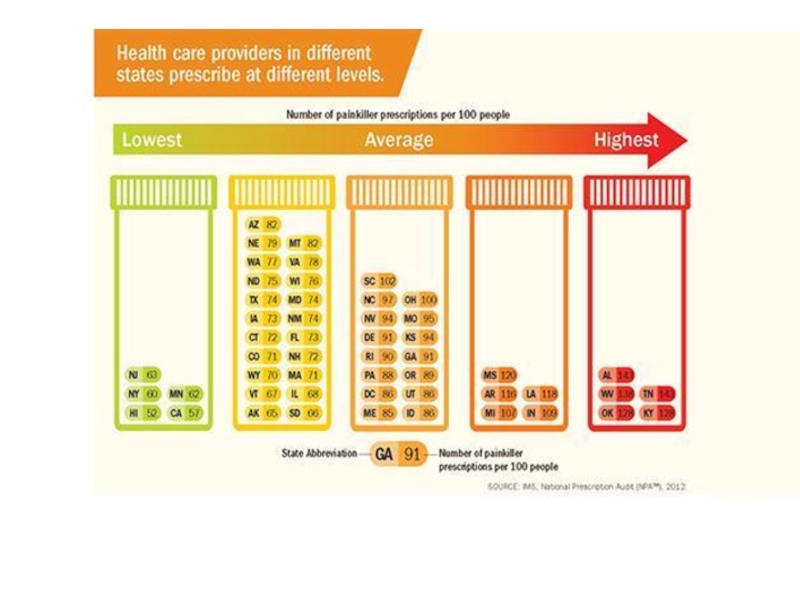
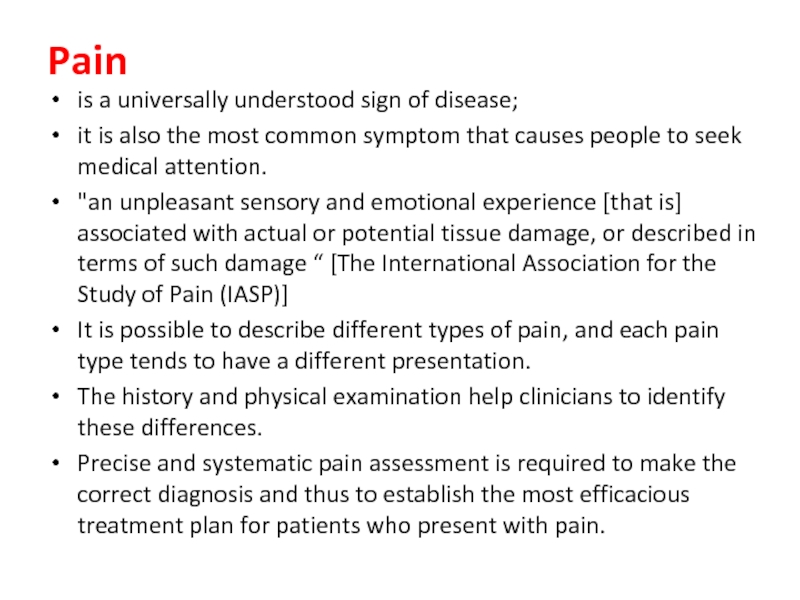
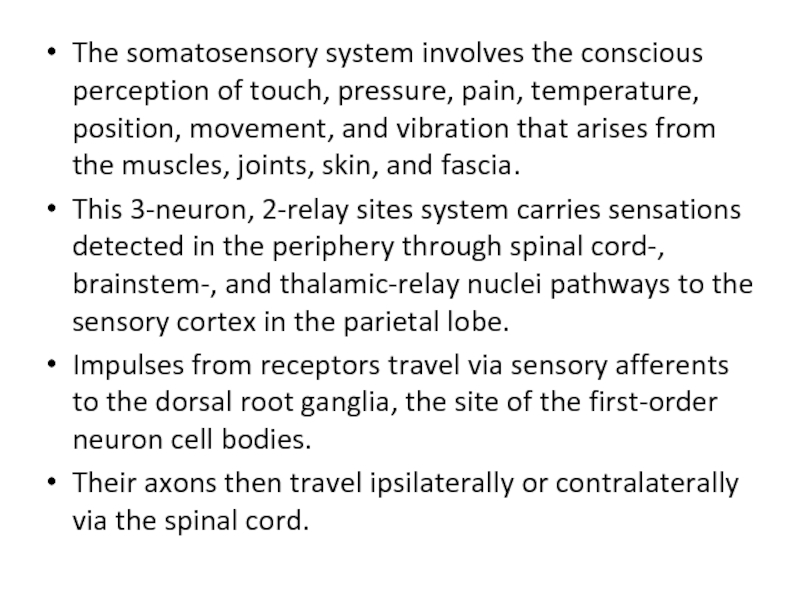
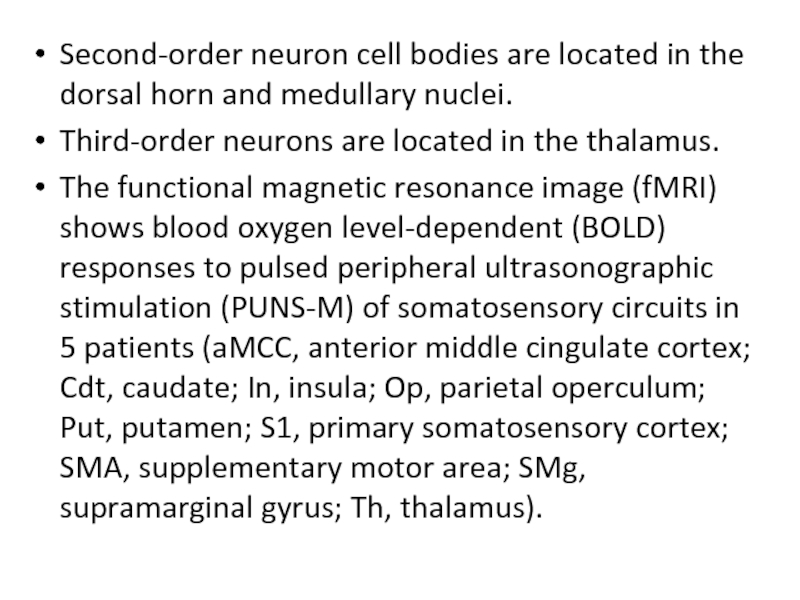
![Image courtesy of Legon et al.[6]](/img/tmb/3/293502/132cfcad1303cc830797df5c67e5b2c2-800x.jpg)
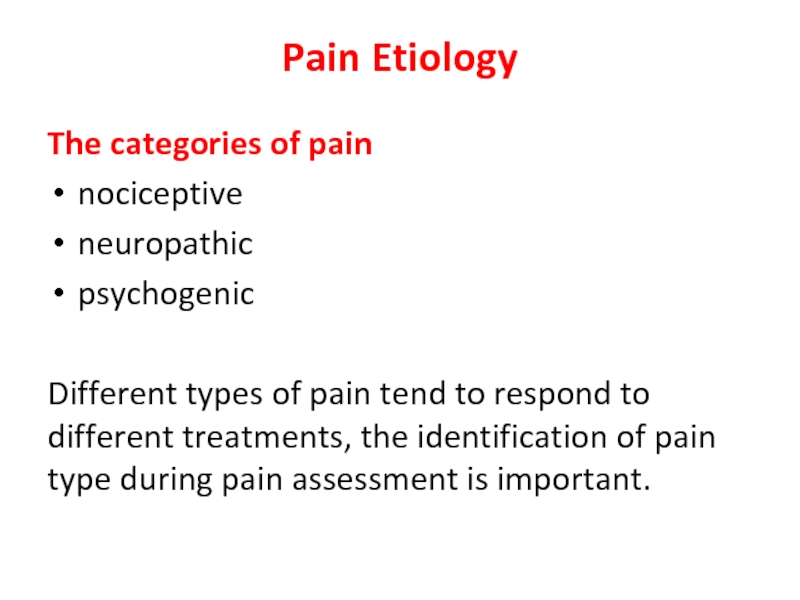
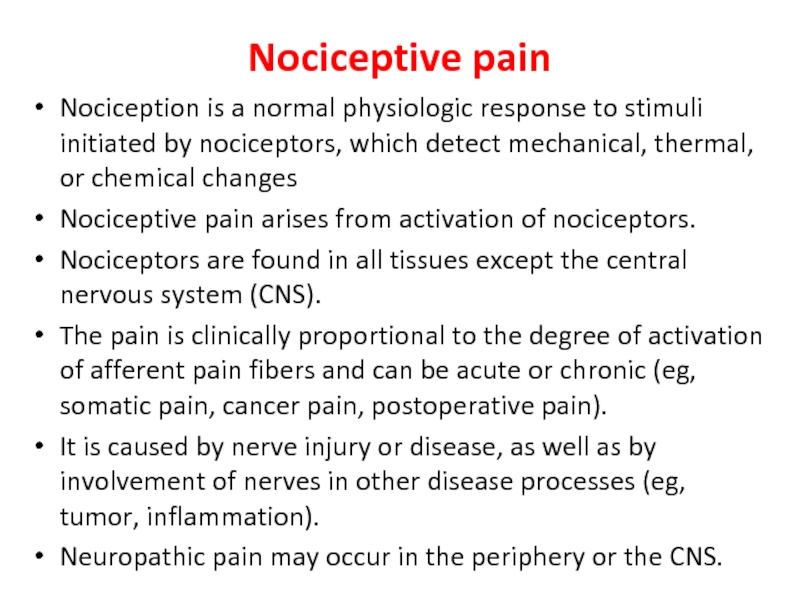
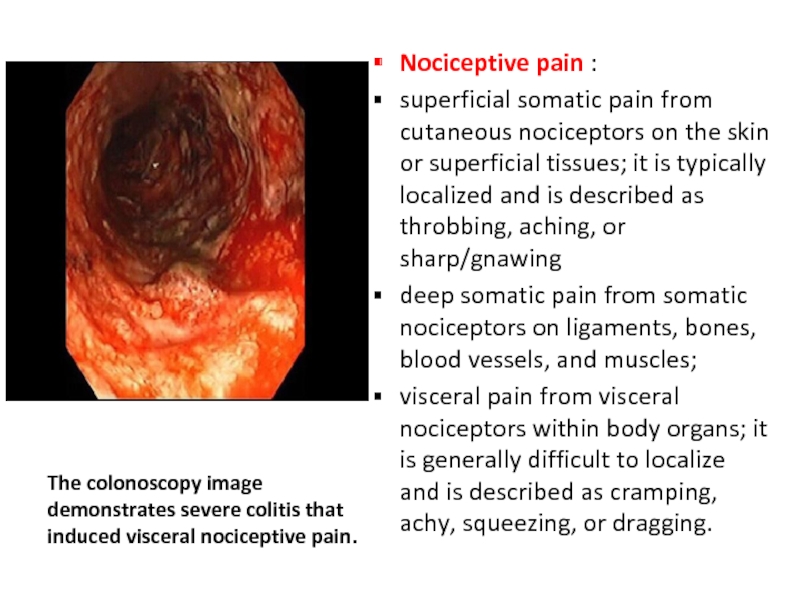
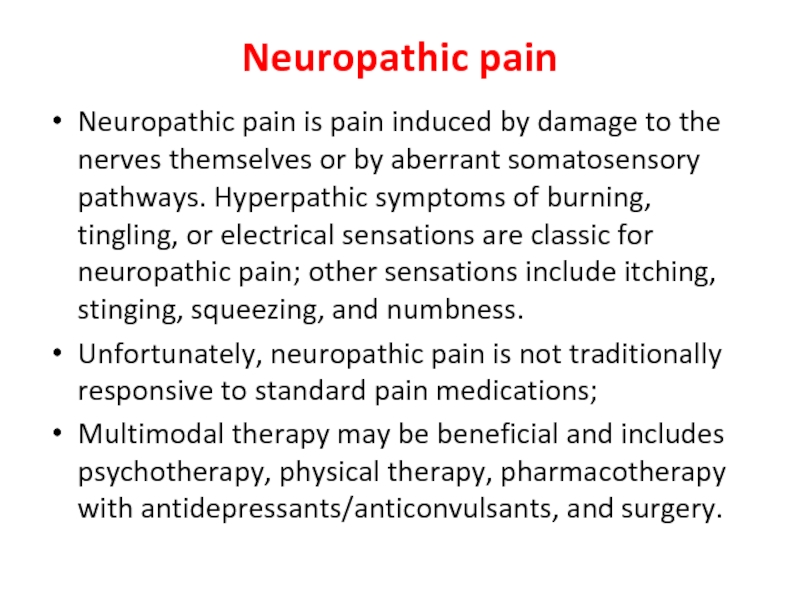
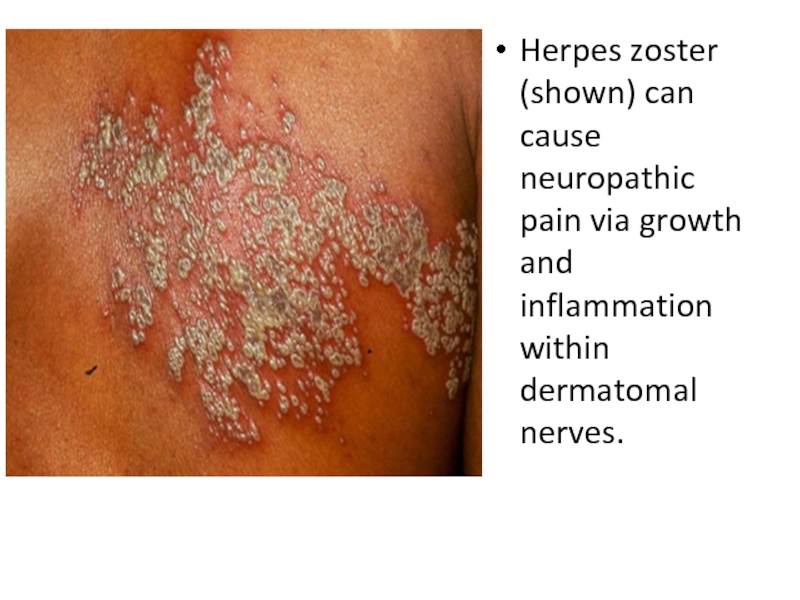
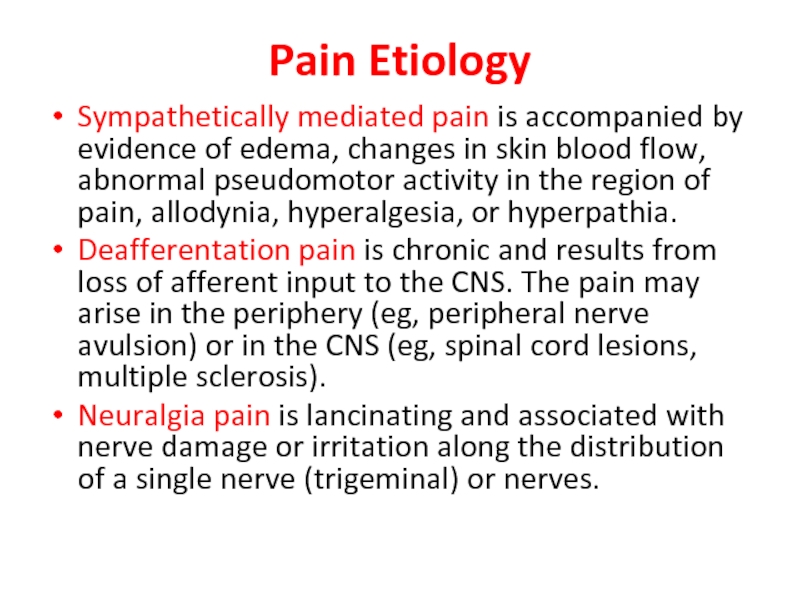
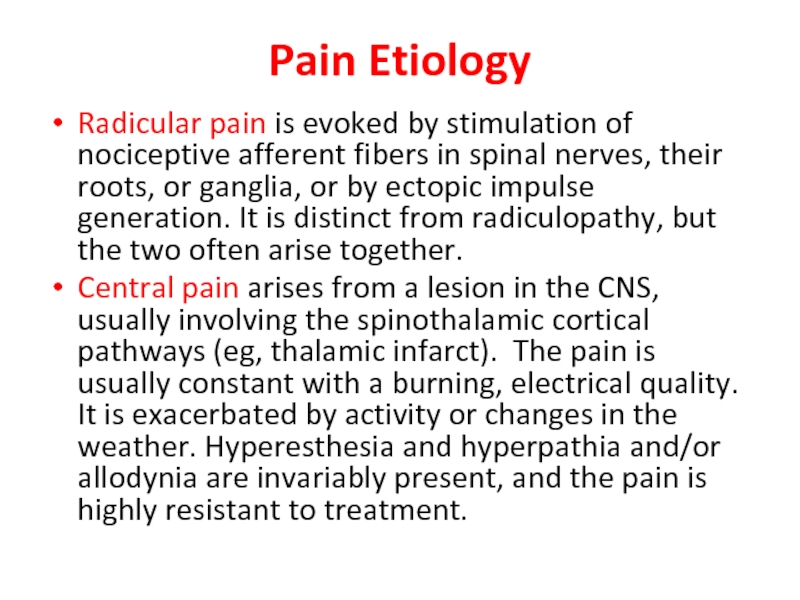
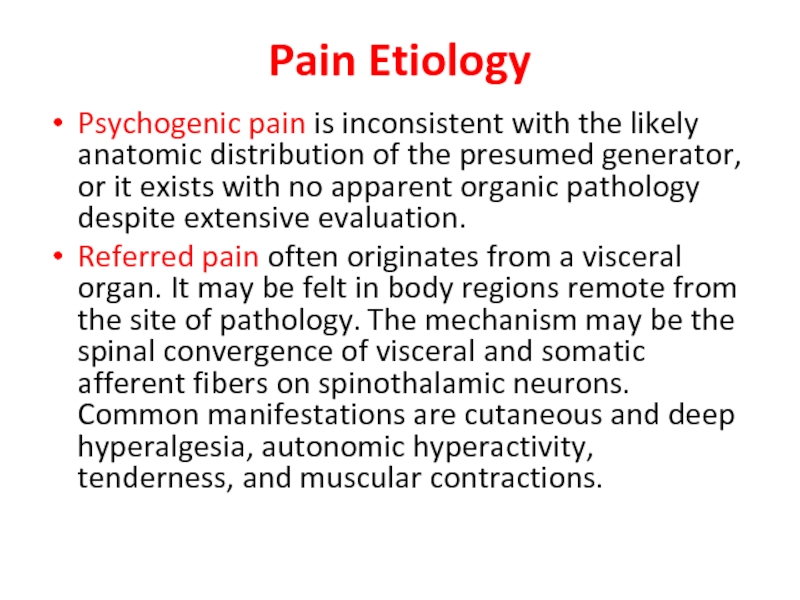
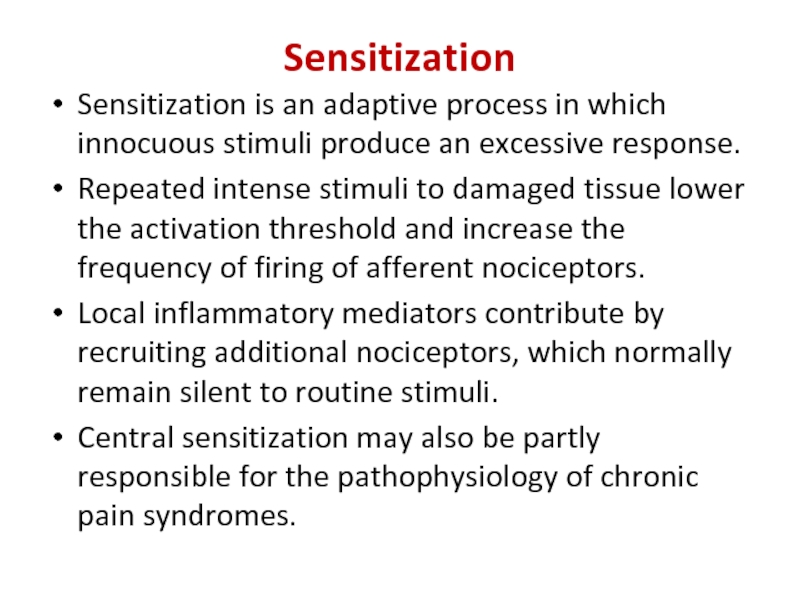
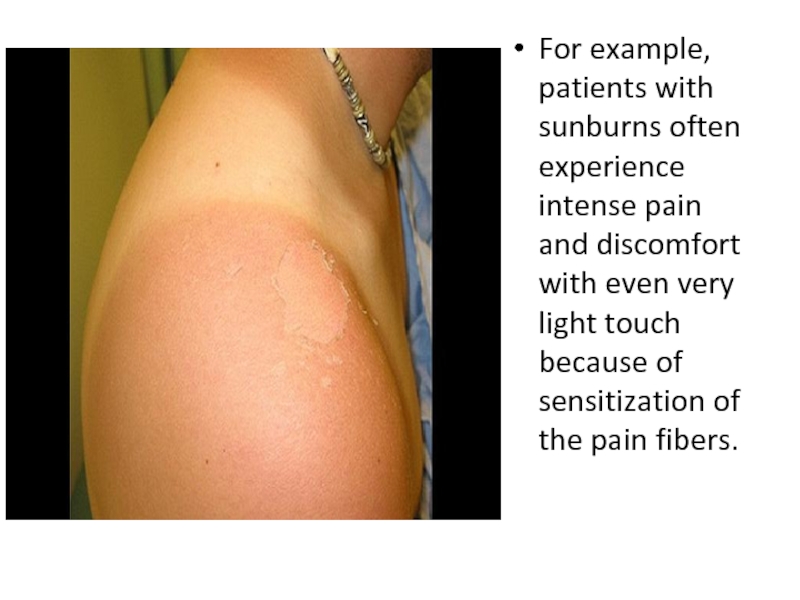
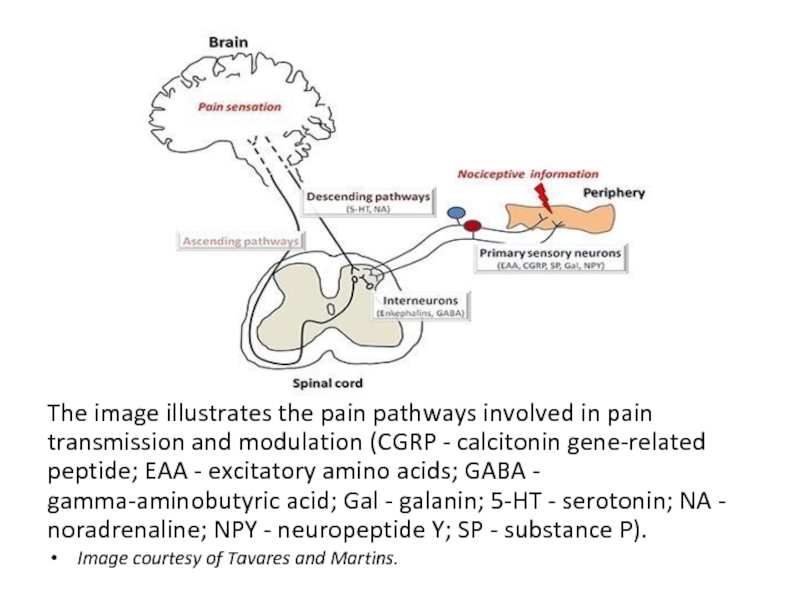
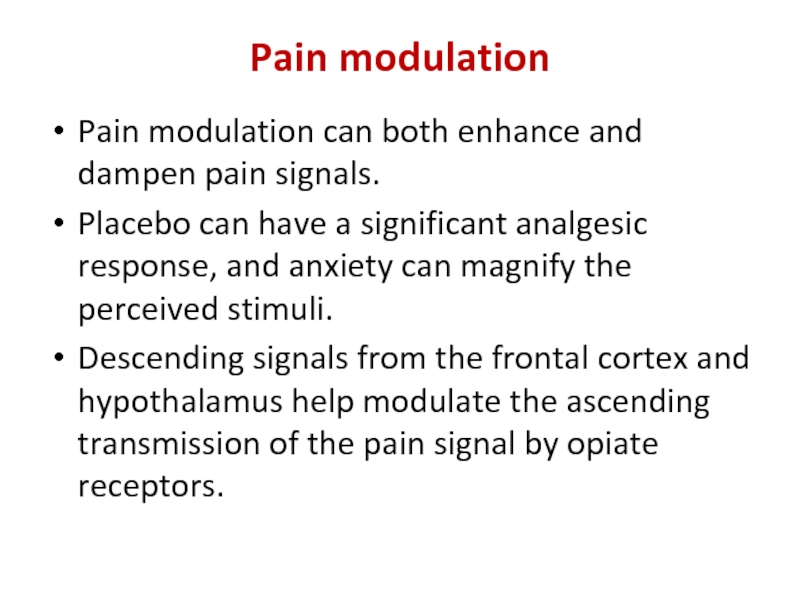
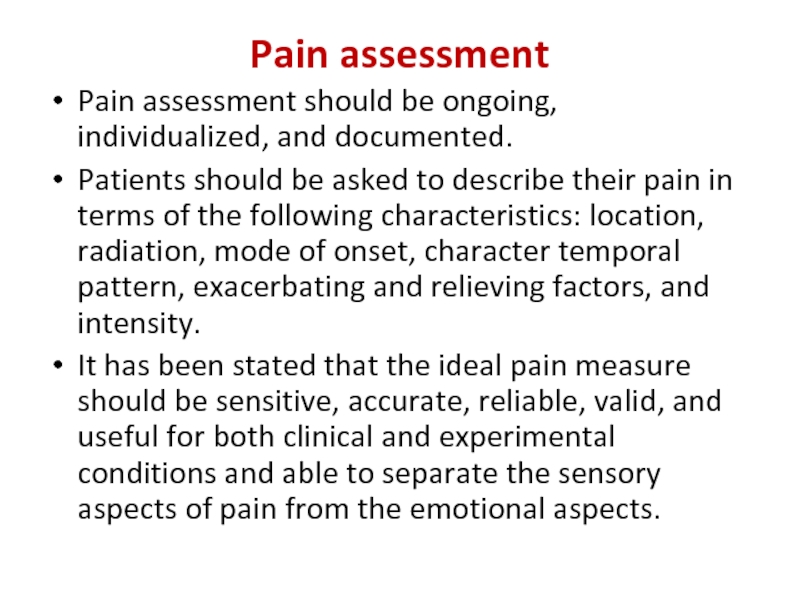
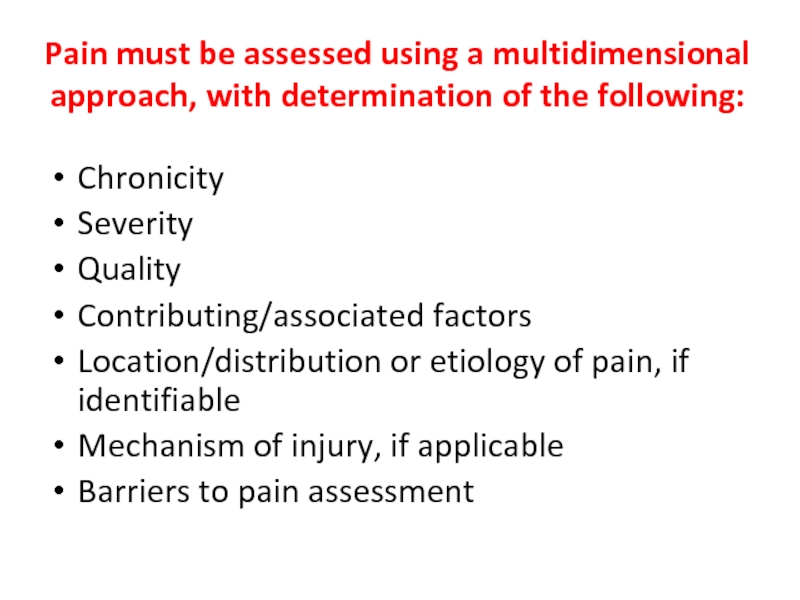
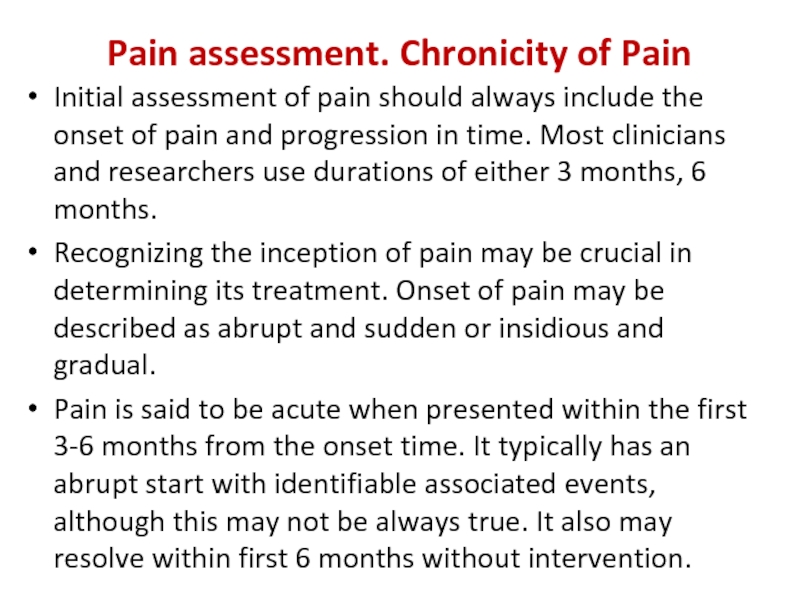
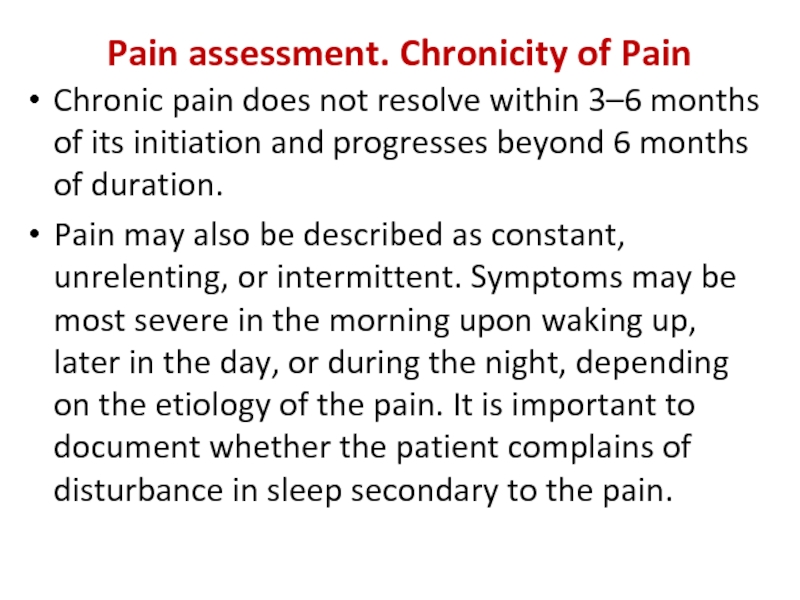
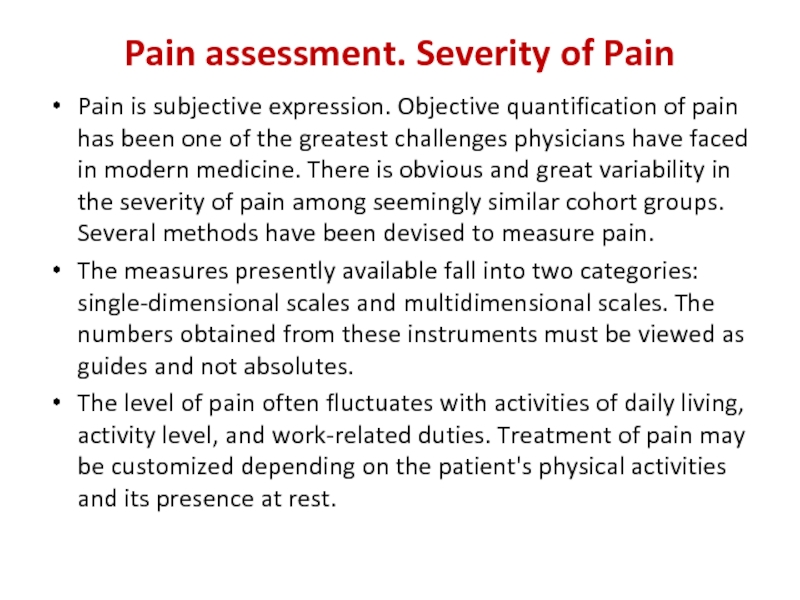
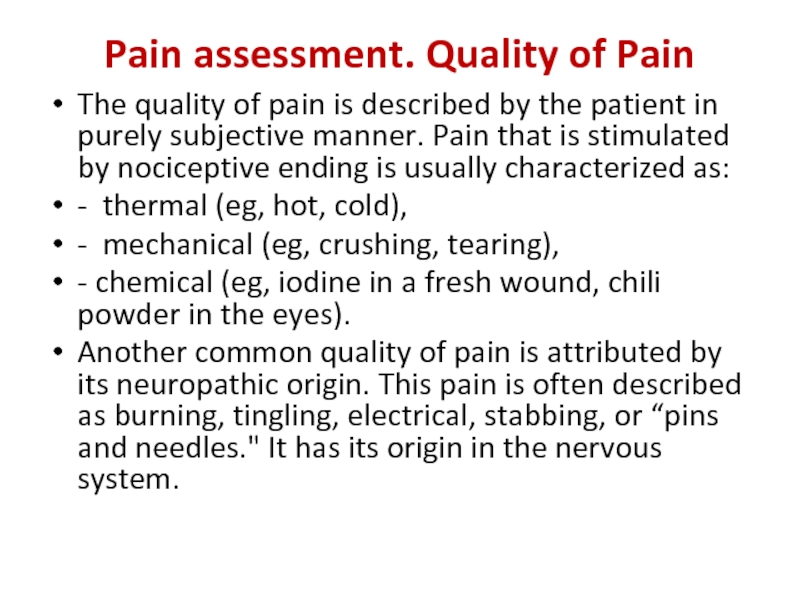
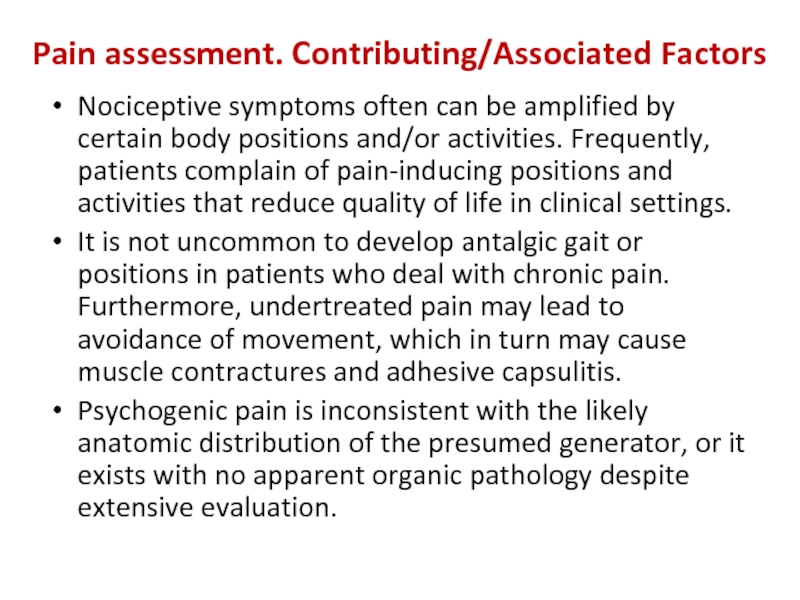
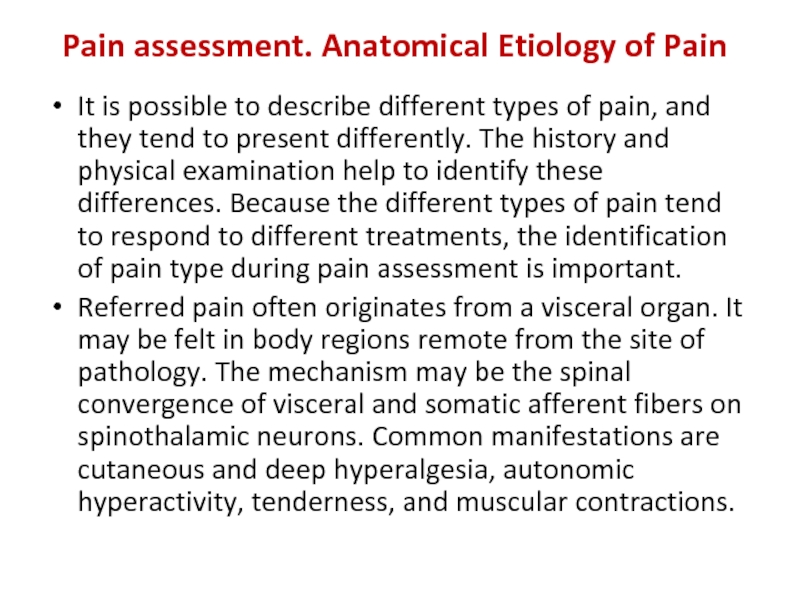
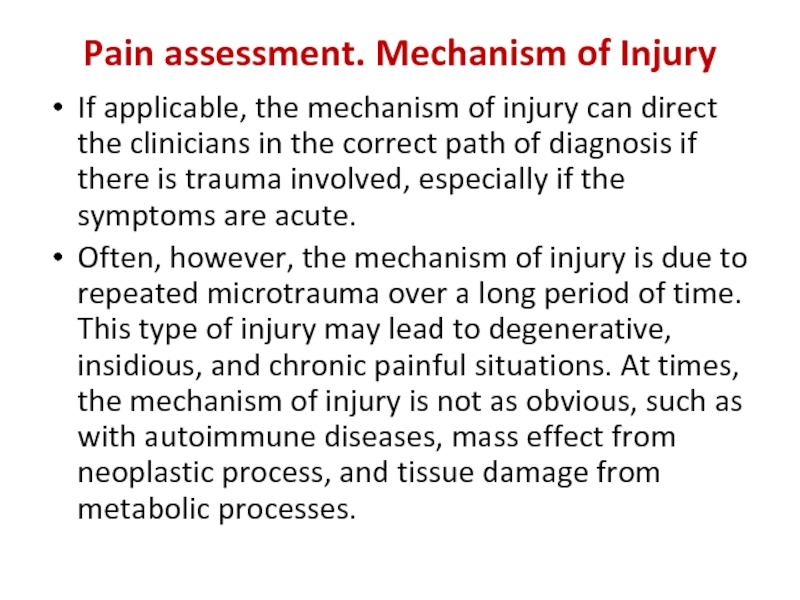
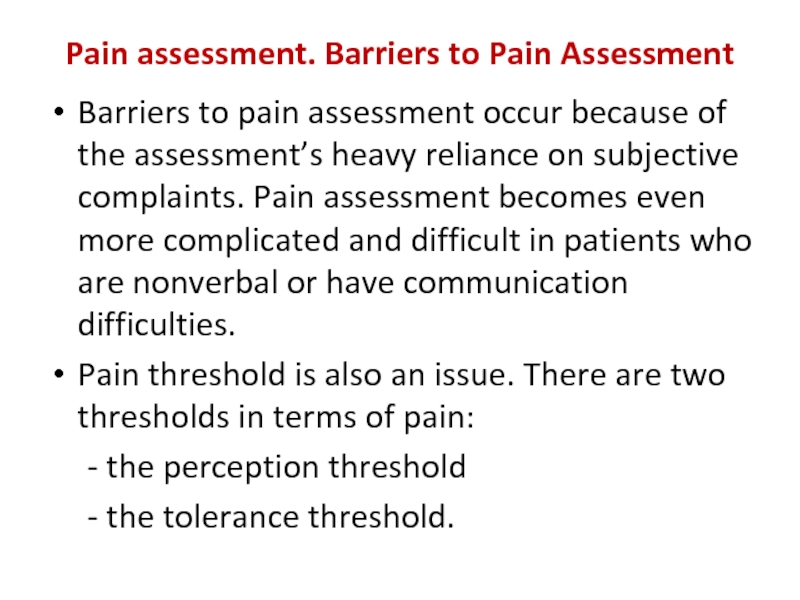
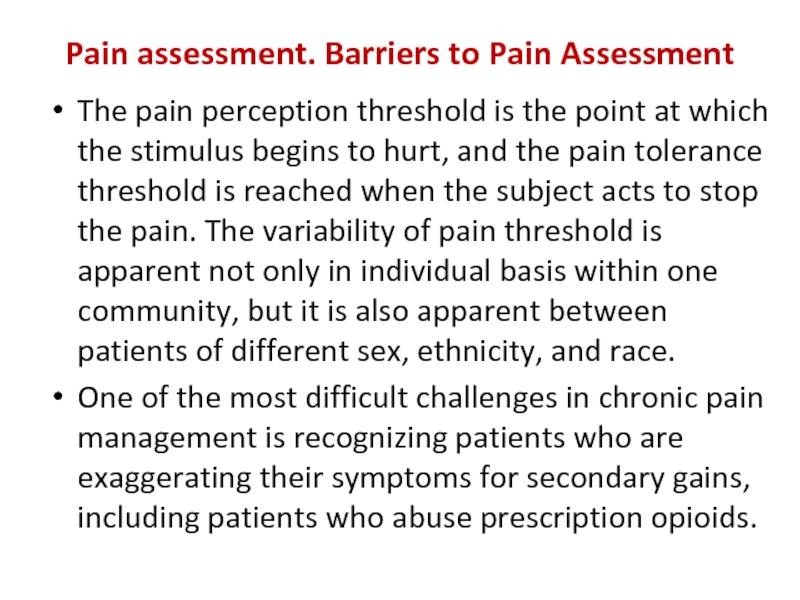
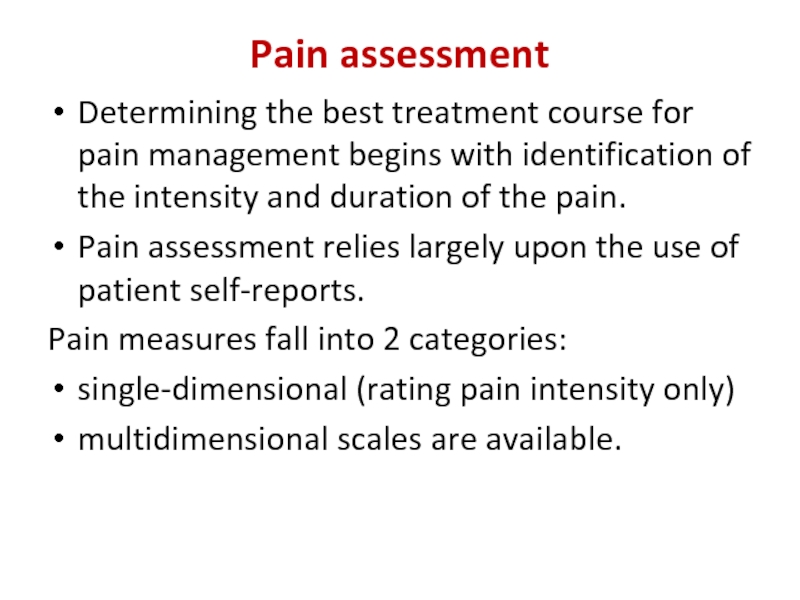
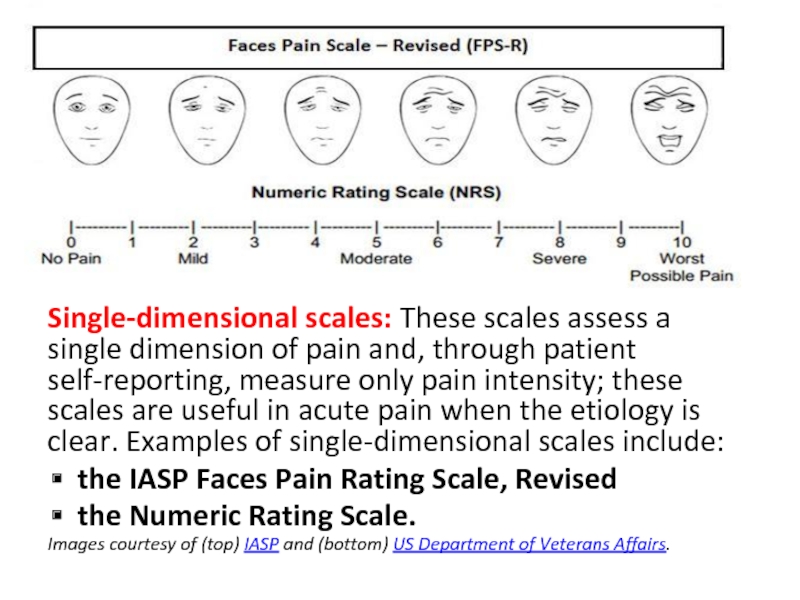
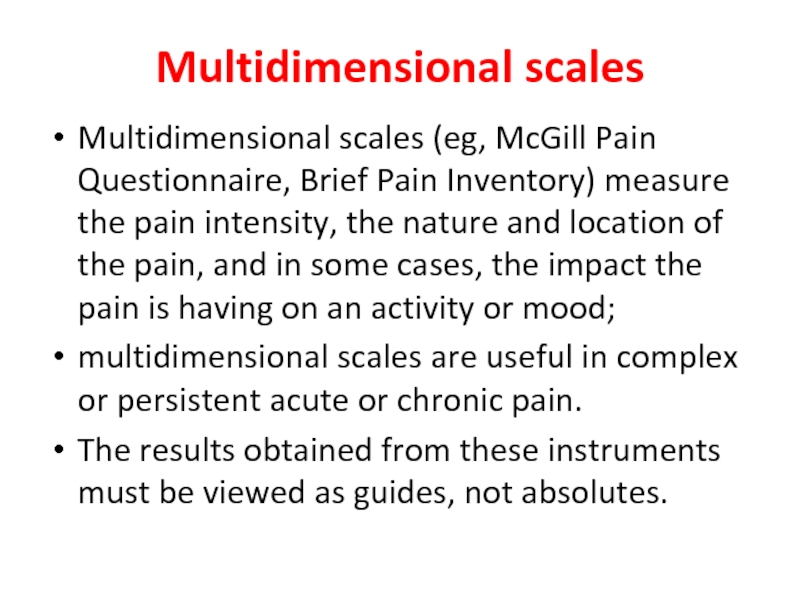
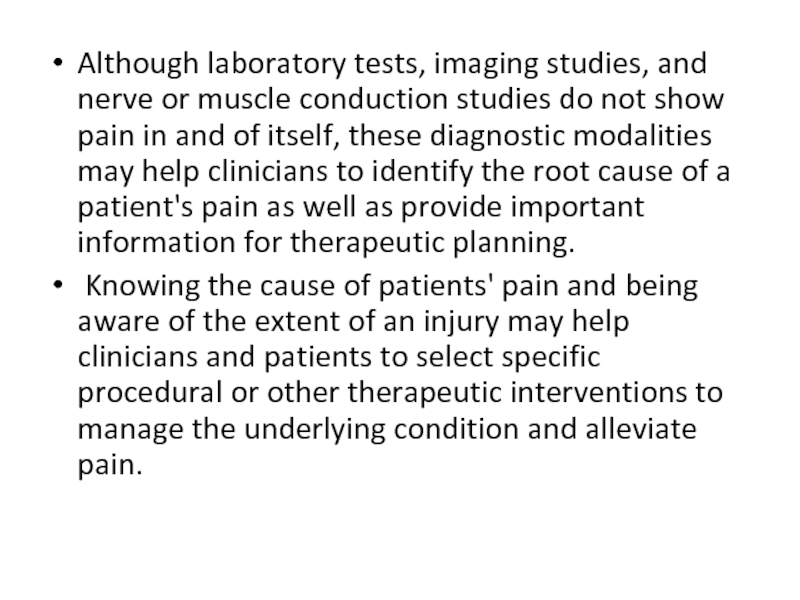
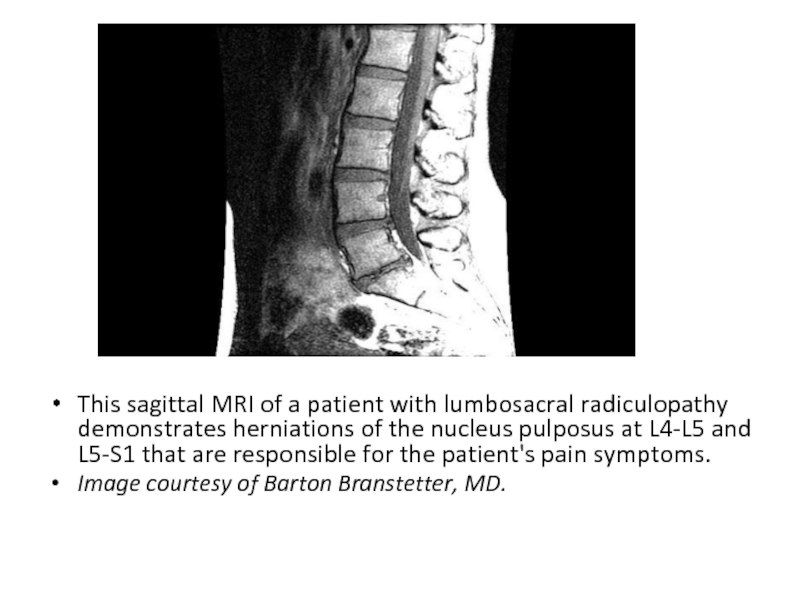
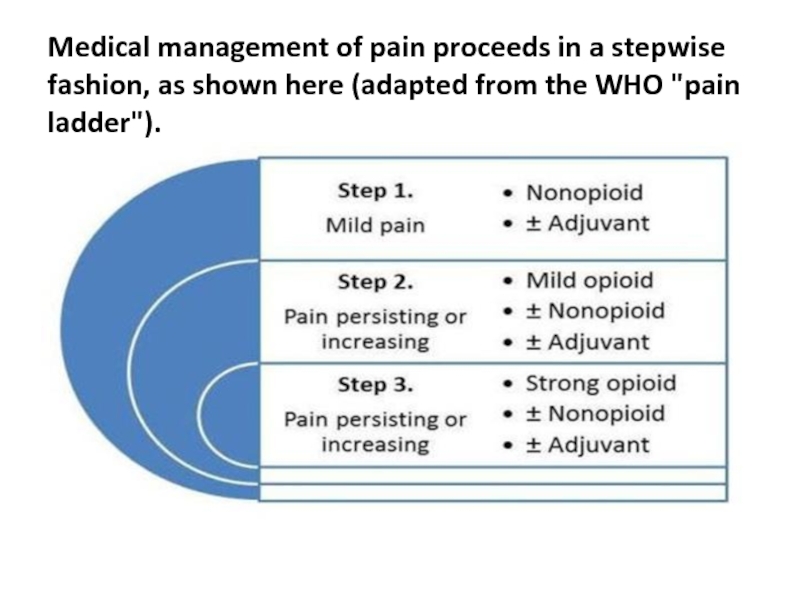
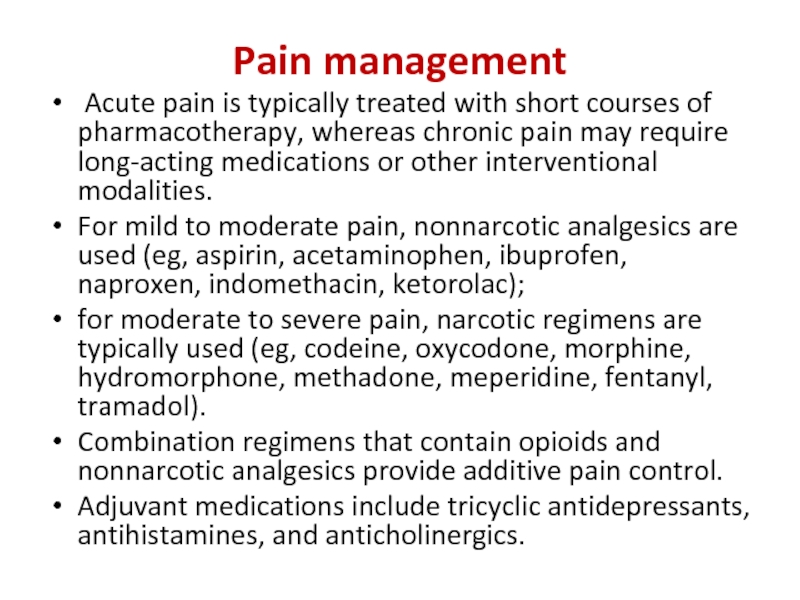
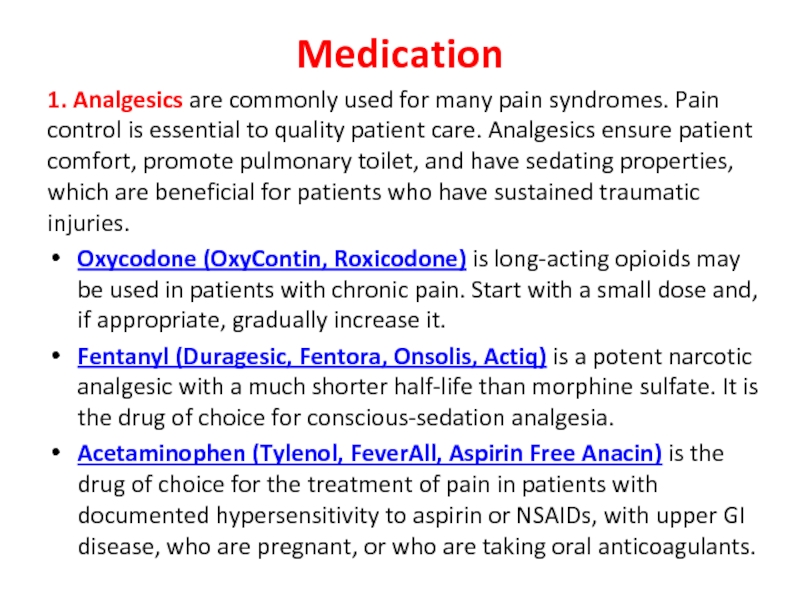
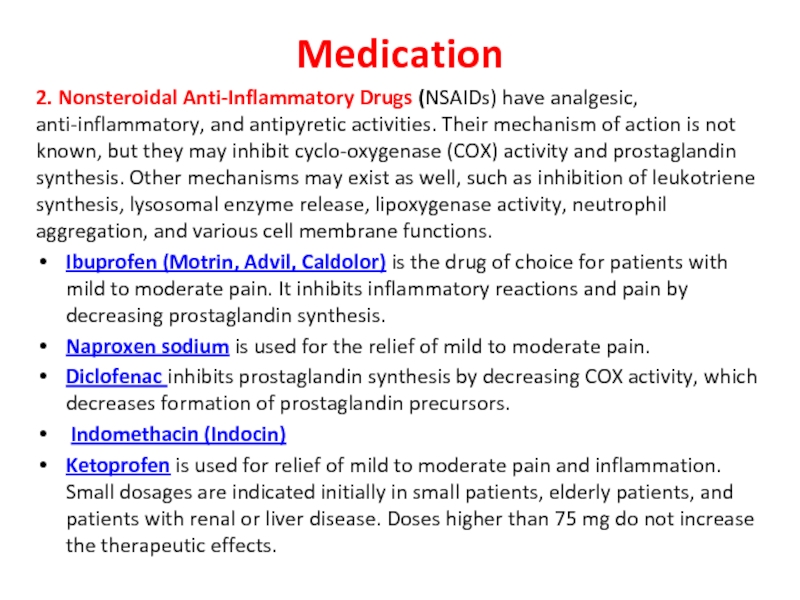
![Medication3. Anticonvulsants. Certain antiepileptic drugs (eg, the gamma-aminobutyric acid [GABA] analogue gabapentin and pregabalin) have](/img/tmb/3/293502/7da847007638b8e598675224f4423cfe-800x.jpg)
